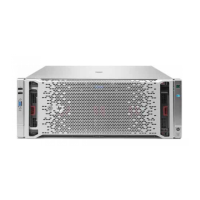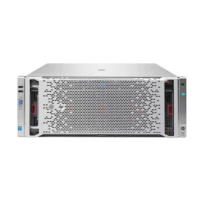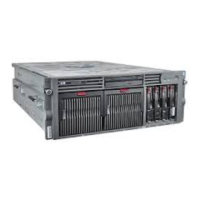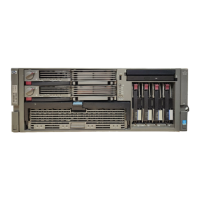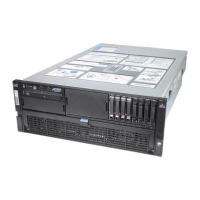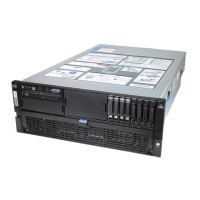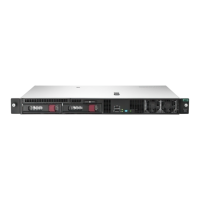• 3 + 1 Redundancy—In a four-power supply configuration, the server will continue to operate if a single power supply fails.
The server will initiate operating system shutdown if two power supplies fail. No AC power redundancy is possible.
• 4 + 0 Redundancy—In a four-power supply configuration, there is no power supply redundancy. The server consumes
more power than what redundancy can supply, and will initiate operating system shutdown if one or more power supplies
fail.
By default, the server is configured for 2 + 2 power redundancy.
To verify that the server is cabled properly for AC power redundancy, see
Removing and replacing a system board.
Procedure
1. Use the HPE Power Advisor (
http://www.hpe.com/info/poweradvisor/online) to determine the power draw of the
system and verify that the server will continue to operate redundantly in the default configuration.
To change the redundancy setting in the UEFI System Utilities, proceed with the following steps.
2. To access the UEFI System Utilities, press F9 during POST.
3. From the System Utilities screen, select System Configuration > BIOS/Platform Configuration (RBSU) > Advanced
Options.
4.
Select the appropriate redundancy configuration from the Power Supply Requirements menu, and then press Enter.
5.
Press F10 to Save or F12 to Save and Exit.
HPE Trusted Platform Module 2.0 Gen10 Option
The HPE Trusted Platform Module 20 Gen10 Option is not a customer-removable part.
CAUTION: If the TPM is removed from the original server and powered up on a
dierent server, data stored in the TPM
including keys will be erased.
If you suspect a TPM board failure, leave the TPM installed and remove the system board. Contact a Hewlett Packard
Enterprise authorized service provider for a replacement system board and TPM board.
98
Removal and replacement procedures

